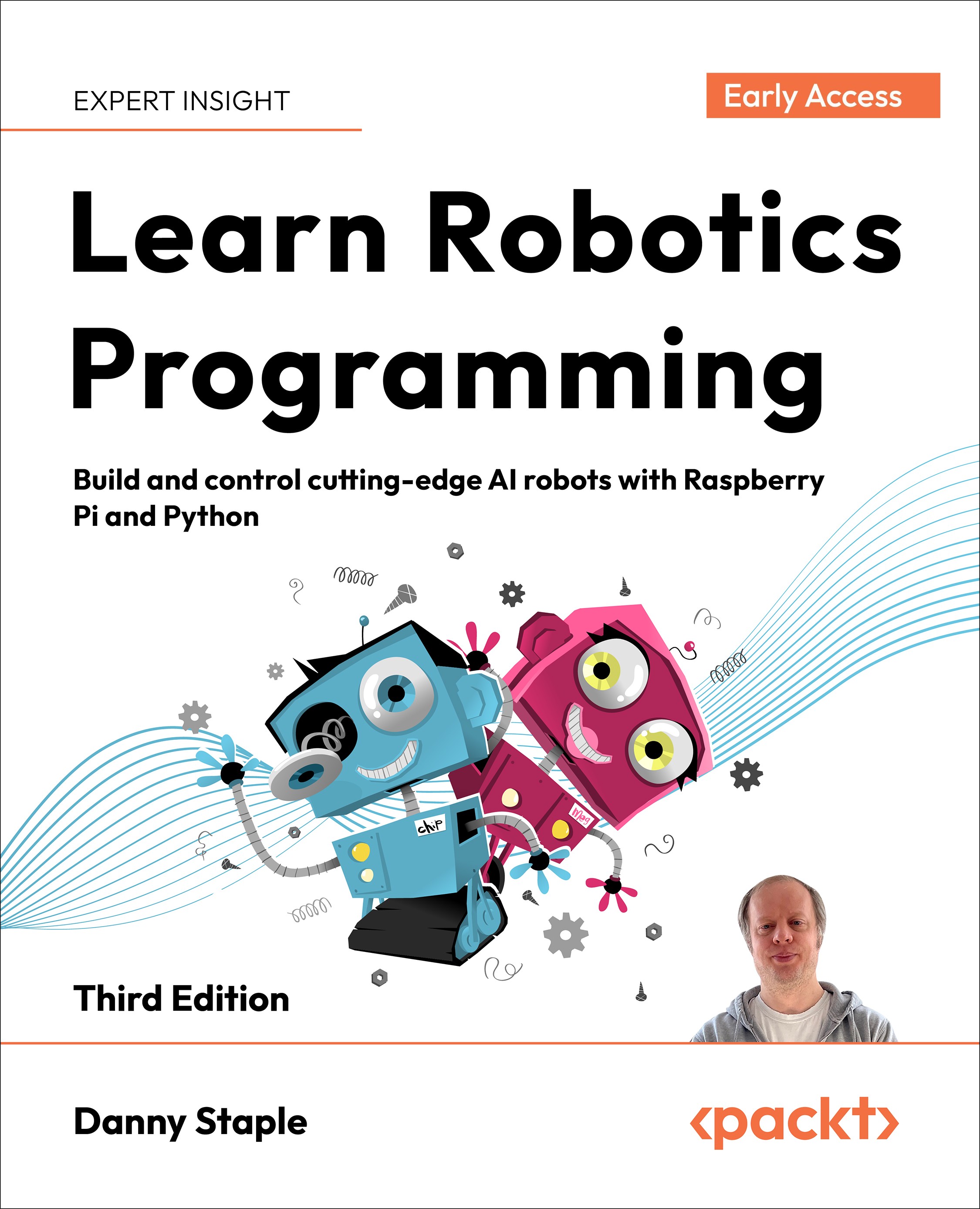Exploring the Raspberry Pi's capabilities
All Raspberry Pi models mentioned can connect to a camera, Wi-Fi, and Bluetooth. Let’s see the capabilities that differ between Raspberry Pi models.
Speed and power
Raspberry Pi is powerful enough to handle some visual processing tasks, such as facial recognition and tracking objects, with later models being able to perform this faster. The same can be said for voice recognition tasks too. It is for this reason that the faster 4B, 3B+, and 3A+ models are recommended. The Zero 2 W model is a little slower, and although the system will still work, the speed and low memory may be frustrating. A Pi 4B can have up to 8 GB of RAM, whereas a Zero 2 W or 3A+ can only have 512 MB.These are all quad-core ARM-based CPUs.
Connectivity and networking
Throughout this book, we will be using Wi-Fi to program the robot, drive it, and start code running on it.All Raspberry Pi models have USB and HDMI ports. We don't plan on using them in this...



























































